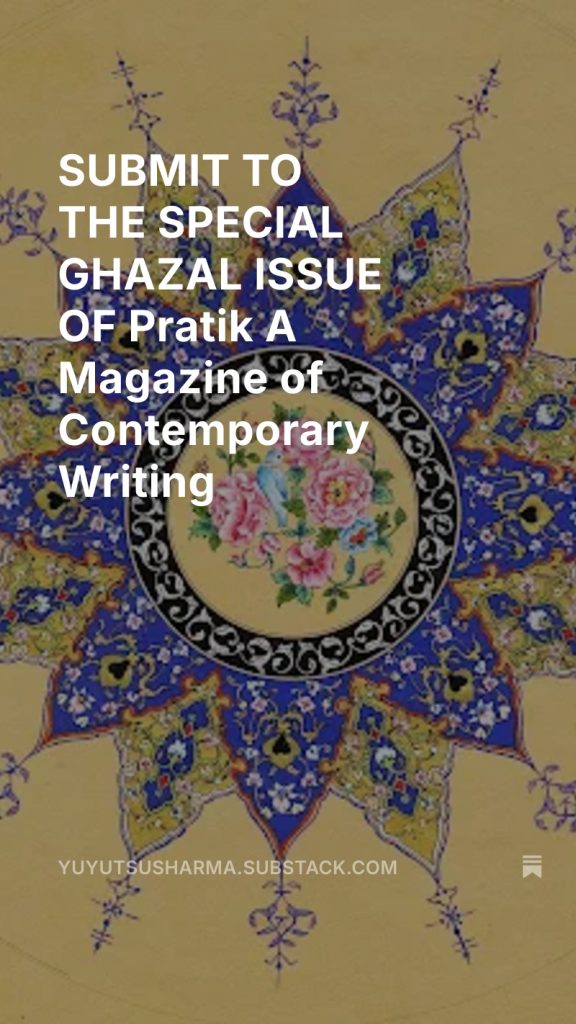SUBMIT TO THE SPECIAL GHAZAL ISSUE OF PRATIK

Pratik, one of the premier international poetry journals, will feature a special Ghazal Issue in Fall 2025. This landmark issue will explore the rich tradition of the ghazal, its modern interpretations, and its evolution across cultures. We invite poets, translators, and scholars to contribute their work and be part of this exciting literary endeavor.
CALL FOR SUBMISSIONS
We seek:
- Original ghazals written in English
- Translations of ghazals from various languages into English (with permission from the original poet, if applicable)
- Prose pieces on ghazal writing: its history, evolution, influence, or personal reflections
- Essays or columns on singular ghazal poets like Mir, Ghalib, or recent masters from your country
SUBMISSION GUIDELINES:
- Submit five ghazals or one prose piece (up to 3,000 words).
- All submissions should be in a Word document format.
- Include a short bio (max 150 words) of the poet, translator, or both, where applicable.
- Translations must be accompanied by the original text and relevant permissions.
- Please use a standard font (Times New Roman, 12pt) and double-spacing for prose.
- Submissions must be previously unpublished (online journals, blogs, and self-published books included).
SUBMISSION DEADLINE: [30 September, 2025]
EMAIL FOR SUBMISSIONS: [pratikmagsubmissions@gmail.com]
WHAT IS A GHAZAL?
A ghazal is a poetic form originating in Persian and Arabic traditions, later flourishing in Urdu, Hindi, Turkish, and other languages. It has a rich history, particularly in Sufi, romantic, and philosophical poetry. The form is characterized by:
- A series of independent couplets (two-line stanzas).
- A rhyme and refrain in the first couplet, repeated in the second line of each subsequent couplet.
- The final couplet (maqta) traditionally includes the poet’s signature (name or pseudonym).
- Themes often explore love, loss, spirituality, and the passage of time.
TIPS FOR WRITING A STRONG GHAZAL
- Ghazals can be a series of standalone couplets or have a common theme.
- Each couplet should be self-contained yet contribute to the overall tone.
- The first line sets up, and the second line delivers impact—whether emotional, ironic, or humorous.
- Traditional ghazals follow strict rhyme and refrain patterns, but modern variations allow more flexibility.
- The best ghazals feel organic, not forced; use homonyms, homographs, and wordplay to make the repetition natural.
For more details: Visit https://pratikmagazine.blogspot.com/2025/04/submit-to-special-ghazal-issue-of-pratik.html
